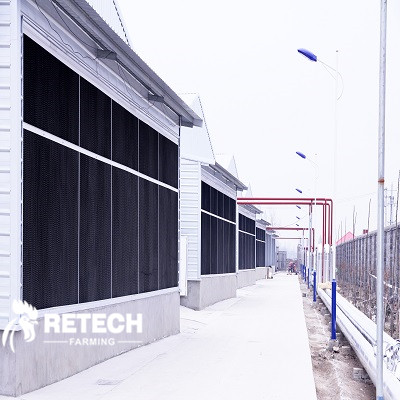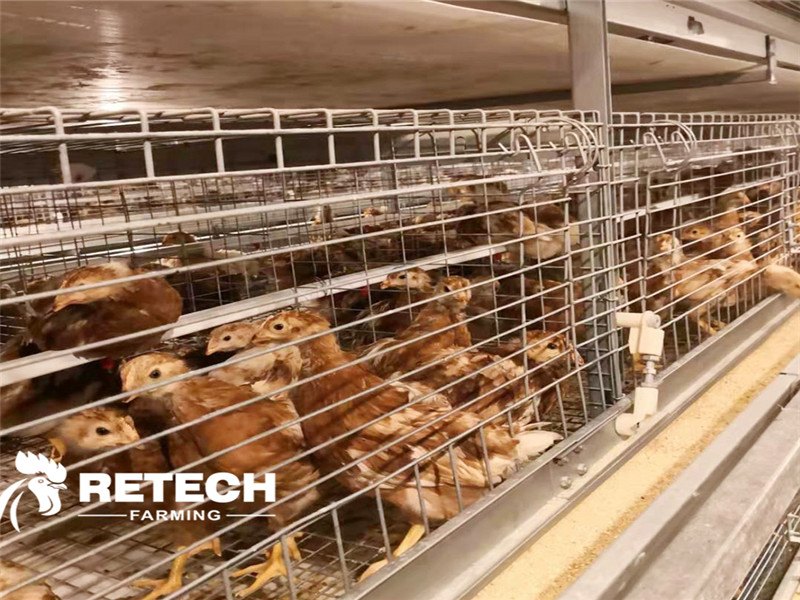Farmers should pay attention to the following 5 points when chicks brooding house in spring
6.Humidity off.
Appropriate humidity can keep the evaporation of water in the pullet constant and improve the fertilization of the chick.
Under normal circumstances, before the age of 10 months, due to the high brooding temperature, the relative humidity of the air is often too low, and attention must be paid to replenishing the moisture in the house, so that the relative humidity in the brooding room reaches 60% to 65%.
After 10 months of age, as the age increases and the body weight increases, the feed intake, water intake, respiration and excretion of the chicks increase day by day.
In addition, the brooding house temperature decreases week by week, which can easily cause indoor humidity. Chicks are extremely unsuitable for this humid environment.
Therefore, the brooding house should strengthen ventilation, change the litter frequently, prevent water from overflowing on the ground or litter when adding drinking water, and control the relative humidity of the brooding room to 55%-60% as much as possible.

7.Density off.
A reasonable density allows the chicks to feed evenly and maintains the orderly development of the flock. The size of the density should be adjusted appropriately according to the age, breed, feeding method, season and structure of the brooding house.
The reasonable density of flat-raised chicks is: 0~4 weeks old, 20~25 chickens/square meter; 5~7 weeks old, 10~20 chickens/square meter.
The reasonable density of online brooding is: 0~4 weeks old, 24~28 birds/square meter; 5~7 weeks old, 15~20 birds/square meter.
8.Light off.
The reasonable light time is: 24 hours of light for 0 to 3 weeks of age, 16 to 19 hours for 4 to 14 days of age, and natural light after 15 days of age.
The light intensity is per 15 square meters of brooding house. In the first week, a 40-watt light bulb is suspended at a height of 2 meters, and the second week begins with a 25-watt light bulb.
9.Ventilation.
In the brooding stage, due to the high temperature of the chicken house and the high density of chicks, chicken manure and waste and feed are easily spoiled and fermented, resulting in a large amount of ammonia, carbon dioxide and other harmful gases.
Therefore, it is necessary to strengthen the ventilation of the brooding room to keep the air in the brooding room fresh.
In order to solve the contradiction between ventilation and heat preservation, the temperature of the brooding room should be increased by 1 ℃ ~ 2 ℃ before ventilation, and it will basically drop to the original house temperature after the search is completed.
The best time for ventilation is around noon on a sunny day. Ventilation should be carried out slowly. The opening of doors and windows should be in a half-open state from small to large. Do not open doors and windows suddenly, let the cold wind blow straight, and make the temperature drop suddenly.

brooding house
10.Epidemic prevention.
According to the local reality, choose a reasonable immunization program for vaccination, and the brooding house should be thoroughly disinfected on a regular basis to keep the chicken house dry, clean and hygienic;
Insist on adding preventive medicines to feed and drinking water;
If sick chickens are found, they should be isolated and treated in time, and dead chickens should be burned or buried away from the chicken house.

pullet chicken cage
Follow us we will update the breeding information.


